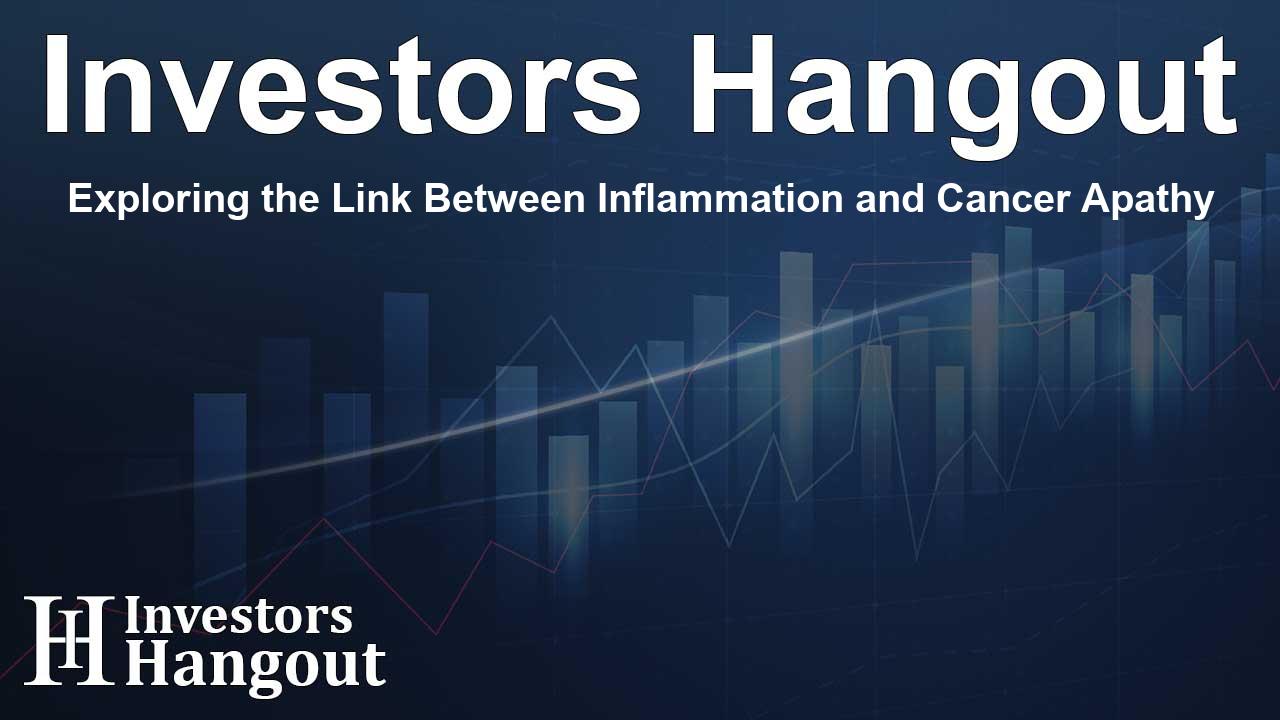Exploring the Link Between Inflammation and Cancer Apathy

Understanding Cancer Cachexia and Its Effects
Cancer is a formidable opponent, challenging not only the physical health of patients but also their mental and emotional well-being. Individuals battling cancer can often feel a significant weariness, a state that goes beyond mere fatigue. This phenomenon, frequently labeled as cancer cachexia, contributes to a distressing decline in both body and spirit. Research from Cold Spring Harbor Laboratory (CSHL) shines a light on how this condition manifests in profound apathy, altering how patients respond to their environments and loved ones.
New Insights into Apathy
Recent findings illuminate the brain-body connection underlying cancer cachexia. CSHL Associate Professor Tobias Janowitz emphasizes the consequences of this condition. Patients may find themselves losing interest in activities they once loved, ranging from favorite family meals to joyful interactions with grandchildren. Their usual enthusiasm is supplanted by a troubling disengagement.
The Role of Dopamine and Inflammation
As cachexia progresses, research has revealed that specific neurons, pivotal in dopamine production—the neurotransmitter linked to pleasure and reward—become increasingly inactive. The team, led by Janowitz and colleague Adam Kepecs from Washington University School of Medicine, found that inflammation significantly impacts the functioning of these neurons.
In their studies with mouse models, the researchers observed elevated levels of IL-6, a pro-inflammatory protein frequently associated with cachexia. When they intervened by reducing IL-6 signaling in key brain regions, they noted improved motivation among the mice. This suggests that the brain actively participates in the physical symptoms caused by cancer, intertwining the mental and biological aspects of the disease.
The Biological Basis of Apathy
This research suggests that apathy isn't solely a psychological consequence of being ill; rather, it is ingrained in the biological processes occurring within the body during cancer cachexia. By mapping this brain circuit that senses inflammation, Janowitz explains how the findings offer new understanding into why cancer patients may appear detached and disinterested.
Potential for Therapy Repurposing
With this newfound understanding, there is potential to repurpose existing antibody therapies aimed at inflammatory responses and enhance the quality of life for cancer patients. Janowitz advocates for an approach that not only combats cancer effectively but also enriches the overall patient experience by mitigating debilitating symptoms like apathy.
A Collaborative Future for Cancer Research
This groundbreaking work exemplifies the significance of interdisciplinary collaboration in healthcare. The researchers’ ambitions are not only focused on therapeutic advancements but on a holistic view of patient care. Their vision is to redefine cancer cachexia from a debilitating condition into one that can be managed, or even overcome.
This shift would not only improve the lives of those diagnosed with cancer but also bring relief to their loved ones who experience the emotional toll of witnessing such suffering. It reflects a concerted effort from scientists dedicated to innovating treatments that encompass both physical recovery and emotional health.
About Cold Spring Harbor Laboratory
Founded in 1890, Cold Spring Harbor Laboratory has become an influential center for biomedical research and education. The Laboratory specializes in cancer, neuroscience, plant biology, and quantitative biology, contributing to groundbreaking discoveries that shape the future of healthcare. With a rich legacy that includes eight Nobel laureates and a committed team of 1,000, including over 600 scientists, Cold Spring Harbor Laboratory remains at the forefront of research aimed at understanding and treating complex diseases.
Frequently Asked Questions
What is cancer cachexia?
Cancer cachexia is a syndrome characterized by severe weight loss, muscle wasting, and a notable decrease in appetite, often seen in cancer patients.
How does inflammation relate to cancer cachexia?
The research indicates that inflammation contributes to changes in brain function, affecting motivation and leading to symptoms like apathy in cancer cachexia patients.
Who conducted the research on cancer apathy and inflammation?
The study was conducted by researchers from Cold Spring Harbor Laboratory, including Associate Professor Tobias Janowitz and Adam Kepecs from Washington University School of Medicine.
Why is dopamine significant in this research?
Dopamine is crucial as it influences feelings of pleasure and motivation; its reduction in cancer cachexia can lead to prominent symptoms like apathy.
What is the potential impact of these findings?
The findings pave the way for possible repurposing of existing antibody treatments to improve both emotional and psychological quality of life for cancer patients.
About The Author
Contact Dominic Sanders privately here. Or send an email with ATTN: Dominic Sanders as the subject to contact@investorshangout.com.
About Investors Hangout
Investors Hangout is a leading online stock forum for financial discussion and learning, offering a wide range of free tools and resources. It draws in traders of all levels, who exchange market knowledge, investigate trading tactics, and keep an eye on industry developments in real time. Featuring financial articles, stock message boards, quotes, charts, company profiles, and live news updates. Through cooperative learning and a wealth of informational resources, it helps users from novices creating their first portfolios to experts honing their techniques. Join Investors Hangout today: https://investorshangout.com/
The content of this article is based on factual, publicly available information and does not represent legal, financial, or investment advice. Investors Hangout does not offer financial advice, and the author is not a licensed financial advisor. Consult a qualified advisor before making any financial or investment decisions based on this article. This article should not be considered advice to purchase, sell, or hold any securities or other investments. If any of the material provided here is inaccurate, please contact us for corrections.
